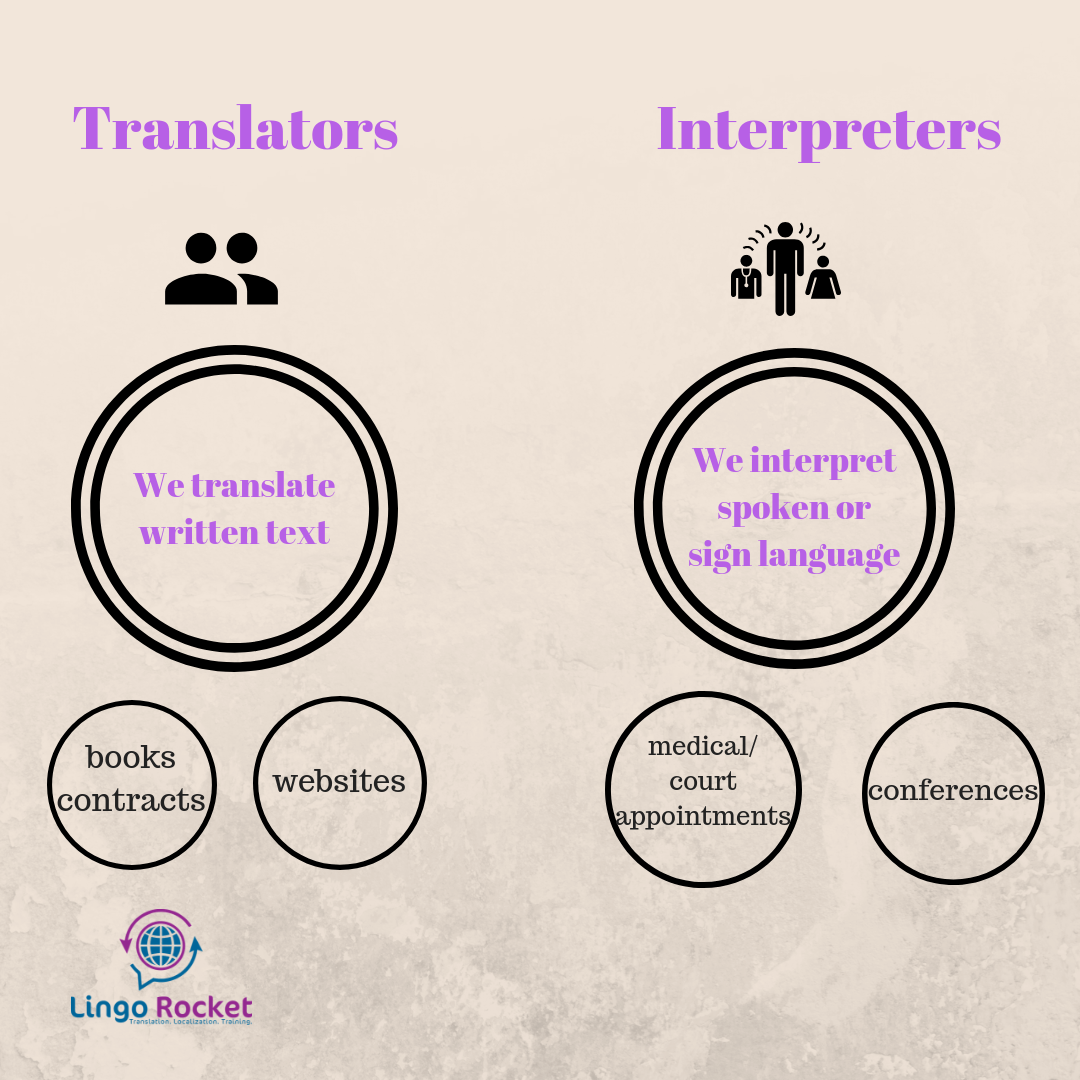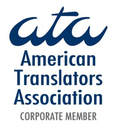LINGO ROCKET BLOG |
|
The 4 Top Business Investments Right Now
Katherine Keller Guest Writer President of Katherine Keller International LLC Our world has become the global village. Ideas are being produced rapidly around the world, and most of them have the potential to change life as we know it for future generations. Already, we've witnessed amazing ideas and technologies that have sahped the way we think, interact and build businesses. You can focus solely on growing your own empire, or you can plan to invest in some of the best business options in 2017. Investments aren't just about becoming a part of something revolutionary. They can give way to opportunities for success for your business idea as well. If a single idea can promote such a positive change, then a combination of them can do multiple wonders -- not only for the business industry but for people around the world. Here are some of the top business-investment moves you can make in the next 12 to 18 months. 1. Virtual reality.Entrepreneurship has strong roots in the virtual-reality industry. Despite being around for a few years now, virtual reality gained better momentum in 2016. Experts believe the industry most likely will continue this positive trajectory in the near future -- with projected revenue of roughly $4.6 billion in 2017. Virtual reality still is greatly under research, and this provides ample opportunities for new ideas. Related: 12 Amazing Uses of Virtual Reality 2. Translation and interpretation.The United States always has been home to multiple cultures and languages. The Census Bureau reports Americans speak more than 350 languages in their homes. On the other hand, businesses have become global. This highly increases the need for both understanding and awareness of more languages. Giants such as Google and Skype have enhanced and expanded their translation capabilities. This allows them to encompass a target market whose customers want a more personalized service. As companies embrace more languages and cultures, employment in areas supporting this industry are projected to increase by 30 percent by 2024. Related: This New Translation Tech Will Smash the Language Barrier to Doing Business Globally 3. Drone technology.Drone technology is meeting the diverse needs of multiple industries, including infrastructure, mining and transport. The developing drone market is estimated to be valued at $127 billion. If you decide to invest in this sector, consider choosing a publicly traded company. It's worth mentioning that big, public drone companies such as Go Pro recently have experienced difficult times on the stock market. Instead of selecting popular manufacturers, weigh the benefits of putting your dollars in drone technology and components. One such example is Ambarella, which specializes in producing the video chip sets used in drone cameras. Related: The iPhone of Drones Is Being Built by This Teenager 4. Green energy. Civilians and big-business names both are becoming increasingly conscious about their carbon footprints. Businesses have a much larger role to play as they set example for green practices. If trends in environmentally friendly business methods are any indication, this is a good place for investment. Wind power, in particular, is gaining momentum. It's inexpensive, and the amount of electricity generated has increased fourfold since 2000. At present, America is the world's top wind-energy producer.
0 Comments
Ever wonder about the difference between a translator and an interpreter? If the answer is yes, you are definitely not alone. “What is the difference between Translation and Interpreting?” - is perhaps one of the most frequently asked questions in the field of language solutions. Translation is rendering text from a source language into a target language while preserving meaning. Translation is always written.
Interpretation, on the other hand, is an oral form of translation. Interpretation enables real-time cross-linguistic communication either face-to-face, in a conference setting or over the phone. Russian Language Challenge Time. Test your Russian knowledge by completing the task in the image below.
 In October, Lingo Rocket had an honor to attend The 70th Virginia Conference on World Trade. During the conference, speakers like Erik Miller (VP of Foreign Exchange Services, Wells Fargo), Barry DuVal (President & CEO VA Chamber of Commerce), John Reinhart (CEO, Port of Virginia), Marguerite Bates-Frier (Intermodal/Regional VP, XPO Logistics), Bob McDonnell (71st VA Governor), and Terry McAuliffe (72nd VA Governor) elaborated on why Virginia is the state for promoting global business and export/import relationships. Looking into Virginia’s business portfolio you would find Facebook, CarMax, Mars, Nestle, and Cannon among other companies that have operations or headquarters in the state. The companies are drawn to Virginia’s successful business climate thanks to top-notch talent, taxes, infrastructure, geographic location, and quality of life. Virginia plans to focus on tourism, transportation, and manufacturing, including wine and craft beer production, to strengthen and promote the state’s national and global business development. Travelers would easily fall in love with Virginia’s historic sites, coastal getaways, and world-class breweries and wineries. As for manufacturing and transportation, Virginia-based companies can benefit from great shipping facilities of The Port of Virginia, fourteen commercial airports, two international airports, and highly ranked business climate. Considering the above information, Virginia offers many opportunities for foreign language instructors, interpreters, translators, and cross-cultural professionals. Language and inter-cultural professionals can use their skills and professional background in global logistics, export/import industries, cyber security, and tourism sectors. We can easily say - Virginia is for business lovers!  France is one of the most visited countries around the world. Eiffel Tower, Champs-Elysées, Louvre, Panthéon, and Notre-Dame are some of the spectacular attractions the country has to offer. Paris, the capital of France, has been often called “the city of lights,” ‘the city of Romance,” and ‘the culinary capital of the world.” The city definitely stands to its standards: Parisian air is filled with affection, beautiful buildings sparkle in the limelight, and then there is French food… Paris is famous for its incredible cheeses, chocolates, pastries and gateaux; the center is known for its hearty peasant fare, pâté and clafoutis (a kirsch-laden dark cherry pie); Burgundy is home to coq au vin, Dijon mustard and escargots; coastal Brittany has abundant fresh seafood, such as moules marinières (mussels in white wine) and moules frites (mussels with French fries); and Bordeaux is synonymous with many of the most decadent of French foods – foie gras, truffles, duck confit, and fine wines and cognac. France is also one of the world’s largest economies. Today, France is home to more than 20,000 foreign companies running under many different legal forms. According to the World Bank and International Finance Corporation (IFC), France is ranked 27th in the world for starting a new business. Regardless if the purpose of your trip to France is strictly tourism or more business related, below are some useful facts to make your visit more enjoyable:
Finally, here are some essential French phrases we think travelers should know:
Whether you want a fast-paced city break or a relaxing country vacation, you will find plenty to do throughout France. So, pack your bags and bon voyage!  Communicating across cultures is challenging but could yield big results whether it comes to your business or personal lives. To be a successful cross-cultural communicator you have to be aware of your own cultural biases and understand cultural differences when it comes to communication. It’s important to know whether you conversation partner comes from a high-context society (Mediterranean, Central European, Latin American, African, Arab, Asian) or a low-context society (most Germanic and English speaking countries). For members of high-context societies it’s typical to leave much of the message to be understood through context and between-the-lines. While for low-context cultures, it’s normal to expect messages to be explicit and direct. Also, you need to understand the differences between sequential vs synchronic and affective vs neutral styles. Contact us today to learn more about communication styles and know what you are most likely to encounter when working with members of different cultures. Many of us have probably heard about benefits of learning a new language. You get to meet new friends from around the globe, advance your career opportunities, build your self-confidence and creativity, and stay smarter for longer. One of my favorite quotes says: “learning a new language to the mind is what exercise does to your body.” So, what’s stopping you from learning a new language? We’ve all heard excuses like “I do not have time” or “I do not want to travel far to study a language.” Luckily for all of us, nowadays you do not need to leave the comfort of your home to add a new language to your collection. You can easily have language lessons via Skype, WattsApp, and other platforms. In addition to that, you can explore e-learning sites like Rosetta Stone, Babbel, and Duolingo. For the past two months we have used the above sites to study Spanish and here is our review of the resources. Let’s start with Rosetta Stone. Rosetta Stone was founded in 1990s and currently offers lessons in 28 -languages. It is a paid service with fees ranging between $180 and $224 for a 24-month subscription. You can go with a CD, software download or an on-line access. Spanish course consists of 20 units and each unit has 33 lessons. Lessons are divided into Core, Pronunciation, Writing, Listening, and Vocabulary sections. Rosetta Stone uses a repetition approach to help learners memorize the material. New words and grammar concepts are introduced in Core Lessons and are repeated throughout the unit. Rosetta Stone is a so-called dynamic immersion program where all of the lessons are provided in targeted language only, which is Spanish in our case. Through the dynamic immersion approach you are forced to learn a language as if you are a baby who is learning sounds, words and then attaching meaning to those words. You will be figuring our word meanings and lesson structure based on visuals and already accumulated knowledge. Rosetta Stone caters to visual and auditory learners since it uses a lot of images and recorded phrases. Extended Learning offers Games, Reading Activities, Phrasebook and a Chat Option. What we really liked about reading activities is that you can read or listen to a pre-recorded text, record yourself, and to then hear yourself reading the text. Phrasebook gives you an opportunity to go through words and phrases learned on Rosetta Stone. Rosetta Stone also gives you an option to schedule a private one-on-one Skype session with one of its instructors. Babbel was founded in 2007 and currently offers courses in 14 languages. You can take a placement test or start your course from the very beginning. Courses are divided into Grammar, Listening and Speaking; and Countries and Traditions. You have an option to focus on a new language specifically for a vacation; in which case you will learn how to make a hotel reservation, order food, recover lost property, and words for visiting a doctor. If you choose to study a language for everyday life you will be immersed in simple dialogues, and phrases on buying food and entertainment. Under Colloquial Speech, you can learn idioms, which in our opinion are a very important part of any language that is not appreciated enough. Under Specials, you can find True Friends and False Friends. True Friends are words that are similar in English and Spanish and that have the same meaning, like “el actor” or “the actor.” Under False Friends, you will see words that sound similar in English and Spanish but have different meanings, like “el exito” which means “success.” First lesson in every course is free and after your first lesson you can pay $12.95/month if you go with a monthly payment or $6.95/month if you buy a 12-month subscription. Duolingo was founded in 2012 and offers courses in 28 languages. Like Babbel, Duolingo has a free and a paid version. Except for when it comes to Duolingo, it is not limited only to the first lesson. You can take an an entire course for free as long as you do not mind seeing an occasional ad. If you want an ad-free option with downloads, the fees are $9.99 for 1 month or $6.99/month for a 12-months subscription. Just like Babbel, Duolingo provides instructions in Spanish with English translation and explanations. Duolingo has a pretty cool feature, Duolingo Events, which lets you meet with other fellow language learners around you. For example, there is a Informal Night of Spanish Conversation and Salsa Dancing offered for Spanish learners in DC area. Stories are where you can practice a language using listening and reading comprehension. Another cool feature offered by Duolingo is language podcasts which are becoming increasingly popular among language learners.
After spending several weeks exploring the three systems, we can easily say that all of the options are really good to supplement your language learning routine. When it comes to choosing a platform, think about if you want an immersion approach or explanations in your native language, what topics you would like to focus on, and what aspects of a language that are important to you. Our personal preference was Duolingo. Duolingo not only saves you money but provides cool modern features like podcasts, discussions, and stories. Whichever platform you decide to go with, we wish you the best of luck in your language adventure! Finally, do not forget to contact Lingo Rocket for any of your foreign language or translation needs. Whether you are a foodie or like exploring palatable international dishes, there is no better way to make a fool of yourself than butchering the pronunciation of menu items. It seems like there is a new item from a global cuisine that becomes trendy at least once a month. We are sure you all have tried or at least heard about gyro, bruschetta, acai, and gnocchi. But do you know how to pronounce those international words? Read on to learn how to properly pronounce some of the popular mouthwatering foods. Bruschetta While many of us pronounce the delicious toast with garlic, olive oil, and diced tomatoes on the top as “brush-etta,” the proper Italian pronunciation is "bruce-kay-tuh." Gnocchi Gnocchi are tasty dough dumplings that could be made from semolina, wheat flour, egg,cheese,potato, breadcrumbs, cornmeal, or similar ingredients. It has been a traditional type of Italian pasta of Middle Eastern origin. The right way to pronounce the dish is "noh-kee." Pho This hearty and fragrant soup is one of the most commonly botched words. It might surprise you, but the right way to pronounce pho is “fuh.” Gyro We bet you were pronouncing this Greek dish wrong, as most people say "gee-roh" when ordering the mouthwatering food. However, the Greek pronunciation is "yee-roh." Açai The trendy and healthy berry is pronounced as “uh-sy-ee.”By the way, did you know that, açaí berries are the number one superfruit. They are energy-boosting, support the immune system, facilitate sleep, and help you combat aging. Prosciutto Prosciutto is an Italian dry-cured ham that is usually thinly sliced and served uncooked. The right way to pronounce the ham is "pro-shoot-tow." Niçoise The salad usually includes raw red peppers, shallots, artichoke hearts and other seasonal raw vegetables. The right pronunciation of the salad is "nee-swahz."
 Russian verbs could easily be the most-complained-about aspect of learning the language. Think about having six different forms of each verb in past, present, and future tenses. The good news is that once you figure out Russian conjunction pattern you will be able to use the verbs correctly. Another good news is that Russian does not have a complicated verb tense system like English. There are only three tenses: Past, Present, and Future. That said, you will have to pay a thorough attention to Russian verbs of motion. It is not just “go” but also “carry”, “come”, “fly”, “swim”, “regularly go”, “go and come back”, “go around to several places” and many more. Another topic you will have to spend time on is verb aspect, which could be “perfective” or “imperfective.” Imperfective aspect is used for repeated or habitual actions or to indicate a single action in progress and therefore incomplete. E.g. “I work every day.” Perfective aspect is used for a single, completed action in the past or in the future. E.g. “I have finished this book.” After teaching Russian for many years, I noticed that sometimes it’s worth to learn basic verbs by heart, then study the patterns of conjugation, and then just tackle perfective/imperfective verbs in pairs. Once you understand the conjugation patterns, you can get away with just learning the infinitives without breaking it all the way down to each conjugation for each aspect of the verb. Success in a global business is about much more than just knowing the language. Cultural competence is the ability to work effectively with people from a variety of cultural, ethic, economic, and religious backgrounds.
The following strategies ( Jones J., 2014) can be utilized to enhance cultural connection:
|
|
|















 RSS Feed
RSS Feed

